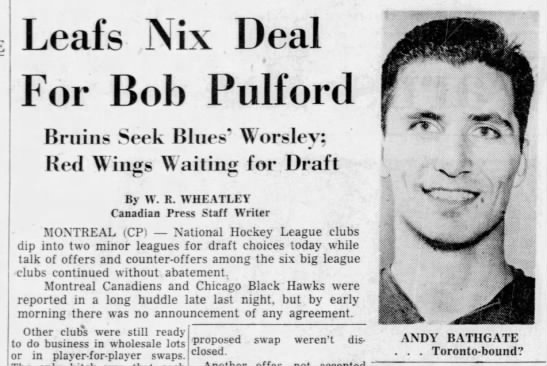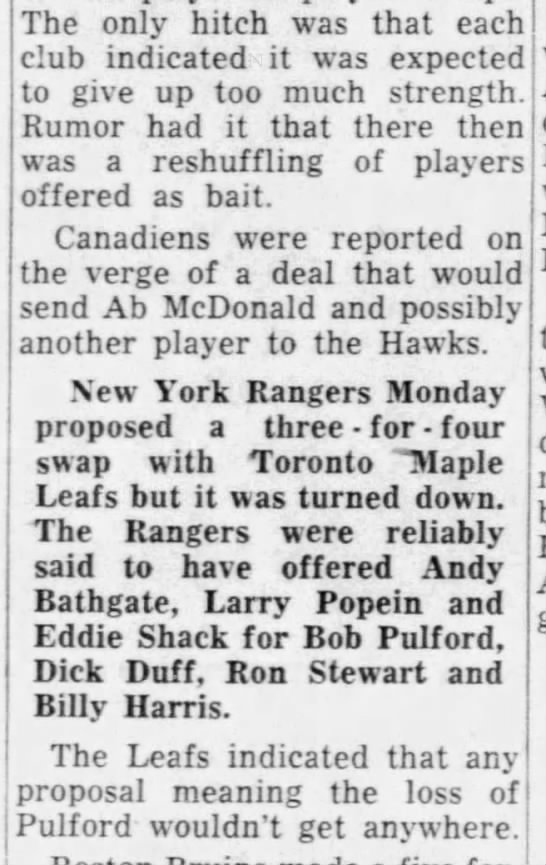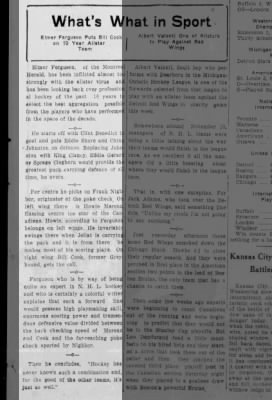December 9, 2010
Pucks From The Past
The Changing Role of the Rover
by Iain Fyffe
Some of you have probably heard of the old rover position in hockey. In the early years of the game, a hockey team played with seven men on the ice at a time, rather than the six they do now. Typically called a “fourth forward”, the rover lined up behind the center, off to one side. The National Hockey Association (the direct predecessor to the National Hockey League) did away with the seventh man in 1911—a motion which at first met with some resistance, but passed when certain owners noted they could save money on salaries with one less man to pay. Hockey's second major league at the time, the Pacific Coast Hockey Association (PCHA), kept the seventh man until 1922, when it merged with the third major league, the Western Canada Hockey League (WCHL).
Some of hockey's earliest pure scorers played the rover position. If you're not familiar with players like
Russell Bowie or
Fred Taylor, educate yourselves. Of course, not all of the best scorers in those days played rover, some were centers such as
Frank McGee or
Ernie Russell or
Marty Walsh or
Newsy Lalonde. Herb Jordan, a gifted scorer and likely one of the best players not in the Hall of Fame, alternated between center and rover, as did Lorne Campbell. Overall, center is more represented among the best scorers of the day. But clearly, at least in the early days of the game, the rover was an offensive position, and was counted on to score goals—perhaps not quite to the same extent as centers, but more than wings.
But an interesting thing happened over the life of the position, specifically near its end in the PCHA. I don't think this has ever been documented before, but at a certain point the rover changed from being a primarily offensive position to a primarily defensive one. And we can pinpoint that change with frightening accuracy. In the 1917-18 season, the rover was an offensive position. In 1918-19, it was a defensive one. And although we're dealing with small leagues with very few players, where an individual player can have significant effect on a league's numbers, it does not appear that this is the case here. So to any quick-witted readers who thought “wasn't that around the time Cyclone Taylor stopped playing?” —you're close, but Taylor is actually support for the idea of this clean break, rather than evidence against it.
You can see this change when you look at positional scoring figures over time. Let's look at some numbers, starting with the 1899-1900 season of the Canadian Amateur Hockey League (CAHL), which eventually became the Eastern Canada Amateur Hockey Association (ECAHA), then the Eastern Canada Hockey Association (ECHA), which led to the NHA. Since the NHA dropped the rover in the same season the PCHA came into existence, we'll then continue on with the western league until we hit the end of the rover's time. This table shows the proportion of team goals scored by each position. For simplicity, left and right wings are averaged together, as are the two defensive positions. They key data we're looking at here are the center and rover numbers.
Proportion of Team Goals Scored by Position
Year League R C W W D D
1899-00 CAHL .234 .293 .197 .197 .040 .040
1900-01 CAHL .344 .178 .204 .204 .035 .035
1901-02 CAHL .318 .265 .169 .169 .040 .040
1902-03 CAHL .272 .306 .178 .178 .033 .033
1903-04 CAHL .309 .238 .184 .184 .043 .043
1904-05 CAHL .316 .269 .158 .158 .049 .049
1905-06 ECAHA .303 .239 .178 .178 .051 .051
1906-07 ECAHA .249 .308 .173 .173 .048 .048
1907-08 ECAHA .218 .291 .169 .169 .077 .077
1908-09 ECHA .213 .360 .146 .146 .068 .068
1909-10 NHA .243 .256 .182 .182 .068 .068
1910-11 NHA .223 .276 .187 .187 .064 .064
1911-12 PCHA .245 .276 .159 .159 .080 .080
1912-13 PCHA .168 .238 .176 .176 .122 .122
1913-14 PCHA .228 .244 .180 .180 .084 .084
1914-15 PCHA .208 .264 .184 .184 .080 .080
1915-16 PCHA .202 .226 .192 .192 .094 .094
1916-17 PCHA .194 .246 .194 .194 .086 .086
1917-18 PCHA .270 .220 .190 .190 .065 .065
1918-19 PCHA .143 .291 .225 .225 .058 .058
1919-20 PCHA .110 .309 .233 .233 .055 .055
1920-21 PCHA .128 .274 .224 .224 .075 .075
1921-22 PCHA .118 .286 .219 .219 .079 .079
Although there is certainly some year-to-year variation, since individual players can have a significant impact on these numbers, from 1899-1900 to 1917-18, rovers scored basically the same number of goals as centers. Rovers scored 25.0% of team goals over that time period, as opposed to 26.3% for centers. From 1918-19 to 1921-22, the figures are 12.5% for rovers and 29.0% for centers. Although we are dealing with a small number of seasons, the effect is dramatic, and as shown below, is supported by team personnel decisions. If we look at the data for centers and rovers graphically, the change becomes quite dramatic:

It's also worth noting that in 1911-12, the NHA's average goals per game dropped from 5.21 to 4.74, which is what you'd expect if you lose an offensive position. And in 1922-23, the PCHA's goals per game increased from 2.82 to 3.44, which is what you'd expect if you lose a defensive position. It seems clear that it was a deliberate choice on the part of managers to make the rover a defensive position.
Perhaps the thing that best illustrates the idea that this was the result of a choice rather than normal turnover of player personnel is Fred Taylor (and the other rovers) of the 1917-18 season. By far the biggest scoring threat in the PCHA, Taylor was the rover for Vancouver up to and including the 1917-18 season, when he led the league with 43 points in 18 games. In 1918-19, he again led the PCHA with 36 points in 20 games. But he was now playing center;
Mickey MacKay had swapped positions with him, moving from center to rover.
This effect can be seen on the other PCHA lineups as well. In 1917-18, Portland played
Tommy Dunderdale at center and Alf Barbour at rover. In 1918-19 (with the team back in Victoria), Dunderdale went to rover (and saw his scoring totals drop dramatically), while Barbour was a left wing. Barbour was a good forward, but was no defensive standout. The same switch happened in Seattle, where skilled scorer
Frank Foyston moved from rover to left wing, while renowned defensive forward
Jack Walker, often credited with inventing the poke-check, took over the fourth forward position. The effect is persistent, and the results obvious. In 1918, the rover became a third defenseman, rather than a fourth forward.
The question then arises: why was this done? Since to my knowledge this phenomenon has never been documented before, it will likely be difficult to find an answer to that question. PCHA magnates
Lester Patrick and his brother
Frank were hockey visionaries in many ways. Perhaps they saw that team defense was a more important facet of the game than had been realized up to that point? Indeed, they were the first to allow limited forward passing in the game, in the neutral zone, starting in 1913. This change began to move the game away from one of individual rushes to one of team offensive play. It makes sense that defending against individual rushes takes a different approach than defending against team passing play. The offensive side of the game was changing; why wouldn't the defensive side change as well?
Iain Fyffe is an author of Hockey Prospectus. You can contact Iain by clicking here or click here to see Iain's other articles.










